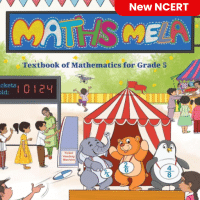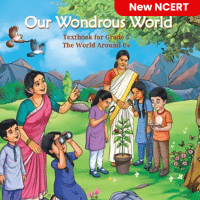Class 5 Exam > Class 5 Questions > Which part of the seed stores food?a)Plumuleb...
Start Learning for Free
Which part of the seed stores food?
- a)Plumule
- b)Shoot
- c)Root
- d)Cotyledon
Correct answer is option 'D'. Can you explain this answer?
Most Upvoted Answer
Which part of the seed stores food?a)Plumuleb)Shootc)Rootd)CotyledonCo...
Understanding Seed Structure
Seeds are vital to the life cycle of plants, and they possess different parts that serve specific functions. One of the key components of a seed is responsible for storing food, which is crucial for the development of a new plant.
What is a Cotyledon?
- The cotyledon is the part of the seed that stores nutrients and food reserves.
- These nutrients are essential for the seedling’s initial growth after germination.
Function of Cotyledons
- Energy Source: Cotyledons provide energy to the developing embryo until it can perform photosynthesis.
- Nutrient Supply: They contain starches, proteins, and fats, which are broken down and absorbed by the growing plant.
Other Parts of the Seed
- Plumule: This is the part of the seed that will develop into the shoot and eventually grow into leaves.
- Shoot: The shoot itself is the stem and leaves that will emerge above ground once the seed germinates.
- Root: The root anchors the plant and absorbs water and nutrients from the soil, but it does not store food.
Conclusion
Thus, the correct answer to the question about which part of the seed stores food is indeed the cotyledon (option D). Understanding the roles of different seed parts helps in grasping how plants grow and thrive from a tiny seed into a full-grown plant.
Seeds are vital to the life cycle of plants, and they possess different parts that serve specific functions. One of the key components of a seed is responsible for storing food, which is crucial for the development of a new plant.
What is a Cotyledon?
- The cotyledon is the part of the seed that stores nutrients and food reserves.
- These nutrients are essential for the seedling’s initial growth after germination.
Function of Cotyledons
- Energy Source: Cotyledons provide energy to the developing embryo until it can perform photosynthesis.
- Nutrient Supply: They contain starches, proteins, and fats, which are broken down and absorbed by the growing plant.
Other Parts of the Seed
- Plumule: This is the part of the seed that will develop into the shoot and eventually grow into leaves.
- Shoot: The shoot itself is the stem and leaves that will emerge above ground once the seed germinates.
- Root: The root anchors the plant and absorbs water and nutrients from the soil, but it does not store food.
Conclusion
Thus, the correct answer to the question about which part of the seed stores food is indeed the cotyledon (option D). Understanding the roles of different seed parts helps in grasping how plants grow and thrive from a tiny seed into a full-grown plant.
Free Test
FREE
| Start Free Test |
Community Answer
Which part of the seed stores food?a)Plumuleb)Shootc)Rootd)CotyledonCo...
The cotyledon is the part of the seed that stores food. It acts as the initial food source for the developing seedling before it can begin to photosynthesize on its own. The other parts of the seed, such as the plumule (which develops into the shoot), the root, and the shoot, all play roles in growth and development, but it is the cotyledon that stores nutrients necessary for early growth.

|
Explore Courses for Class 5 exam
|

|
Question Description
Which part of the seed stores food?a)Plumuleb)Shootc)Rootd)CotyledonCorrect answer is option 'D'. Can you explain this answer? for Class 5 2025 is part of Class 5 preparation. The Question and answers have been prepared according to the Class 5 exam syllabus. Information about Which part of the seed stores food?a)Plumuleb)Shootc)Rootd)CotyledonCorrect answer is option 'D'. Can you explain this answer? covers all topics & solutions for Class 5 2025 Exam. Find important definitions, questions, meanings, examples, exercises and tests below for Which part of the seed stores food?a)Plumuleb)Shootc)Rootd)CotyledonCorrect answer is option 'D'. Can you explain this answer?.
Which part of the seed stores food?a)Plumuleb)Shootc)Rootd)CotyledonCorrect answer is option 'D'. Can you explain this answer? for Class 5 2025 is part of Class 5 preparation. The Question and answers have been prepared according to the Class 5 exam syllabus. Information about Which part of the seed stores food?a)Plumuleb)Shootc)Rootd)CotyledonCorrect answer is option 'D'. Can you explain this answer? covers all topics & solutions for Class 5 2025 Exam. Find important definitions, questions, meanings, examples, exercises and tests below for Which part of the seed stores food?a)Plumuleb)Shootc)Rootd)CotyledonCorrect answer is option 'D'. Can you explain this answer?.
Solutions for Which part of the seed stores food?a)Plumuleb)Shootc)Rootd)CotyledonCorrect answer is option 'D'. Can you explain this answer? in English & in Hindi are available as part of our courses for Class 5.
Download more important topics, notes, lectures and mock test series for Class 5 Exam by signing up for free.
Here you can find the meaning of Which part of the seed stores food?a)Plumuleb)Shootc)Rootd)CotyledonCorrect answer is option 'D'. Can you explain this answer? defined & explained in the simplest way possible. Besides giving the explanation of
Which part of the seed stores food?a)Plumuleb)Shootc)Rootd)CotyledonCorrect answer is option 'D'. Can you explain this answer?, a detailed solution for Which part of the seed stores food?a)Plumuleb)Shootc)Rootd)CotyledonCorrect answer is option 'D'. Can you explain this answer? has been provided alongside types of Which part of the seed stores food?a)Plumuleb)Shootc)Rootd)CotyledonCorrect answer is option 'D'. Can you explain this answer? theory, EduRev gives you an
ample number of questions to practice Which part of the seed stores food?a)Plumuleb)Shootc)Rootd)CotyledonCorrect answer is option 'D'. Can you explain this answer? tests, examples and also practice Class 5 tests.

|
Explore Courses for Class 5 exam
|

|
Signup for Free!
Signup to see your scores go up within 7 days! Learn & Practice with 1000+ FREE Notes, Videos & Tests.


















